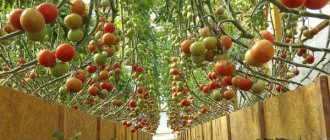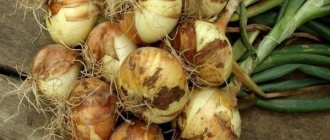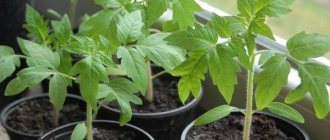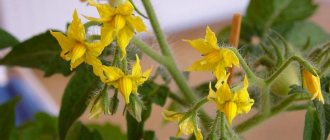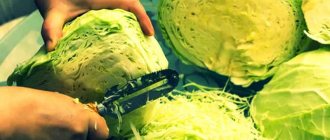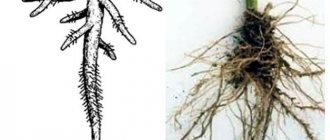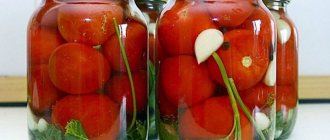Tomatoes are grown in almost every summer cottage. The varieties of this plant are diverse, everyone chooses to their own taste. Many people like large-fruited varieties: from one tomato weighing under 500 g you can make a salad for the whole family! However, large fruit requires special care, one of the main elements of which is gartering the bushes. After all, no matter how strong the trunks and branches on which hang heavy juicy fruits or clusters of medium-sized tomatoes, but in total giving the same weight, they can break under the weight of the harvest, and it will be a shame to lose the result of your efforts.
Why tie up tomatoes?
Almost all tomatoes need tying, since tall and high-yielding varieties are often grown in greenhouses and open ground, and they definitely need to be tied. Gartering tomatoes in a greenhouse is a mandatory agrotechnical measure, and now you will find out why.
- Tall plants are not able to support the weight of tomatoes and may break.
- When gartering, the fruits are above ground level, which protects them from diseases and pest attacks.
- Tied tomatoes are easier to plant. Ovaries and fruits also form on the stepsons, but they rarely have time to ripen, but they take a lot of energy from the plant. Therefore they are usually removed.
- Tethered plants are easier to water and fertilize at the root.
Practicality and economy: fiberglass reinforcement in the country
When we come to our summer cottage, we assess the situation every day... it’s time to pull down the house, build a new shower and makeshift shed, put a greenhouse on the right, and plant tomatoes in the garden on the left. There are thousands of such solutions, but each of them depends on free time and financial costs, and if we can find time to work at the dacha at least on a day off, then money does not come to us so easily once a week. There is only one thing left to do - save on buildings, decoration, and growing some plants. But in order not to limit yourself in the dacha business, to continue to build and achieve maximum results, it is not at all necessary to abandon objects or part of the garden; you can always choose related materials for supply, which will cost a little less.
Today we decided to study a material such as fiberglass reinforcement. This is a high-class building material with considerable demand, which can be safely used in the countryside. Thanks to its characteristics and positive qualities, it can be used almost everywhere, which will immediately reduce a certain type of cost by 15-30%. So, let's go into more detail, because the topic is quite interesting!
Garter tomato in a greenhouse
It is easier to fix tomatoes in a vertical position in a greenhouse than in open ground. All that is needed to tie up plants is supports and garter material (narrow strips of fabric, nylon tights or knee socks). Plastic clips are great for this task and can be used for several seasons. For tying, do not use wire, fishing line, thread, twine or other thin and hard materials.
Tying to a separate support
This option is suitable for mini-greenhouses, mobile and small stationary greenhouses in which compact and medium-sized bushes are planted. As supports , you can use wooden stakes of approximately the same length, metal or plastic pipes and thick rods. They are installed next to each bush and must correspond to its height. A strip of fabric is wrapped around the stem and secured to a support.
Wire frame mounting
This method is used for small bushes with abundant fruiting. You will need a large mesh metal mesh , which is wrapped around the plant. It turns out to be a wide “pipe”, the base of which is dug into the ground. If necessary, it can be moved to another place, and the stems and fruits are tied to it at any height. The only difficulty arises during the harvesting of fruits.
Application of fiberglass reinforcement
We decided to take a closer look at the areas of application of fiberglass reinforcement in the country, and we will give some examples for this.
The use of composite reinforcement is possible even in the construction of water structures; it is not afraid of corrosion
Bandaging the foundation for country houses
The material can be used to reinforce foundations for low-rise construction, for the construction of a summer kitchen, gazebo, shower and toilet, stove and barbecue, sauna and barn.
The reinforcement is plastic and does not require special skills for assembly. It is enough to place the reinforcement in the place where the foundation is poured, bandage it and pour the concrete. Due to its characteristics, the reinforcement will qualitatively strengthen the foundation, prevent it from cracking and will not serve as “cold bridges” like steel reinforcement.
High-quality reinforcement of foundations with fiberglass reinforcement
Pouring reinforced areas
At the dacha, areas are often required, for example, for parking a car, for creating a canopy, and so on. We use different materials for their construction - paving slabs, masonry, simple backfilling with crushed stone, but you can always make a high-quality concrete platform reinforced with fiberglass reinforcement. What is important here is the correct calculation of the depth and dressing, then only the simplest installation and laying of high-quality concrete.
Reinforced platforms and paths using composite reinforcement
Greenhouse for a summer residence made of composite reinforcement
We built greenhouses from pipes, steel reinforcement, metal profiles, wood, metal corners and other materials, but now we have the opportunity to install a spring greenhouse in a matter of hours, with virtually no costs.
These materials are enough to build a greenhouse - film, fittings, wooden plank
We only need to cut the rods to the required length and install them in a wooden frame or directly into the ground. Afterwards, stretch the film over the top, bring high-quality fertile soil inside and begin planting.
Since the reinforcement is light but durable and is not afraid of moisture and oxidation, such a greenhouse will have only one drawback - the film, which will have to be changed every year or two.
Just two hours of free time, and the greenhouse made of composite reinforcement is ready
Trellis made of fiberglass reinforcement
We have already considered trellises made of wood, pipes, thick wire and other materials earlier. But now you can simply cut pieces of reinforcement from a skein, install a couple of supports for vertical gardening, and make the frame out of composite material. You won’t have to spend a long time tightening bolts and nuts, welding, or hiring specialists. It will be enough to tie the frame with clamps, applying pieces of reinforcement to the main supports in the right place, and manually tightening the clamps.
In addition, strong and durable reinforcement can be used for supports in the garden and garden. You can easily make pegs for flowers and ornamental shrubs, peppers and tomatoes.
Using fiberglass reinforcement to care for plants in the country
The use of fiberglass reinforcement in a dacha is not only possible, but moreover, completely justified! It is cheaper than steel, easy to install, great for serious and light structures, does not require special equipment and fits perfectly into the design of the garden and lawn, as it can be selected in different shades. The fittings will last for many years without painting or protective agents, will help you save money and increase the practicality of working in the country.
Methods for tying tomatoes for open ground
It is worth noting that gardening is developing every year. Breeders are constantly developing new varieties of vegetable crops. In practice, gardeners have tried different methods of tying. Feeding and pinching shrubs are important stages in growing tomato crops.
On the pegs
This is one of the most popular methods that will allow you to maintain the vertical position of the stems of tall tomatoes. To do this, you need to drive a peg into the ground next to the bush, and then carefully tie the plant stem to it. If necessary, the bush should be tied up in several places. The height of the pegs can be approximately 20 cm above the stem of the seedling.
Options for assembling a small greenhouse
Foundation diagram for a greenhouse.
The greenhouse can be installed on a wooden box enclosing an area of 3x1.5 m, and door awnings can be attached to it on one of the long sides. The structure can be easily lifted and, placing a support under the frame, you can work in the garden bed.
The frame of a temporary greenhouse can be made from only two elements. These will be 2 edged boards with a section of 40x100 mm. To build a three-meter greenhouse, it is enough to buy one board of standard (6 m) length and cut it in half. Both halves are laid parallel to each other. Holes for rods are drilled in them along the edges and every 500 mm. To make the structure more rigid, one fiberglass rod must be fixed perpendicular to the arcs on both sides of the greenhouse. You can tie the reinforcement with steel wire or nylon ties.
The base of a temporary greenhouse can be assembled from polyethylene sewer pipes with a cross-section of 50 to 100 mm. They are connected using rectangular fittings. Holes for reinforcement are also drilled in the long sides of the frame. The film is secured with clamps made from pieces of pipes of the same diameter sawn lengthwise.
If the greenhouse is built in one place every year, then you can do without a wooden frame by driving several steel pipes parallel to each other into the ground, the inner diameter of which allows fiberglass rods to be inserted into them. Before installing the tubes, you need to drive in 4 pegs and pull 2 threads between the pairs. After this, the tubes are driven into the ground opposite each other along the extended cords. It is not practical to build large-area greenhouses in this way, since access to the bed will be provided only from the end sides. It is better to press the film from the ends with some heavy objects.
Gardener mistakes
A common mistake gardeners make is using unprocessed materials. Only those devices that have been treated with disinfectants are suitable for use. If this is not done, you will introduce infections and fungal spores to new plantings, destroying most of the crop.
There are other errors:
- high installation speed. If you want to quickly tie up your tomatoes, be prepared for possible damage to the bushes. When carrying out this procedure, do not rush, because... damage to the shoots will reduce the number of formed fruits;
- hilling. If the crop needs hilling, you should not dig out supports to facilitate the process. Try to do this work carefully so as not to disturb the settings;
- use of low-quality materials. Tying tomatoes is a costly process. By saving on the purchase of equipment, you risk losing most of the future harvest;
- tight tying will lead to deterioration of the bush’s vegetation;
- installation of lightweight structures that break under the weight of the fruit;
- fastening side shoots with a stapler or tapener. This disrupts the structure of the plant.
Material for production
To make stakes, a variety of improvised means are used - branches and trunks of bushes, metal fittings, fiberglass and plastic elements, and of course you will need ropes for tying up tomatoes.
Tree
Wooden supports are valued for their low cost.
The service life reaches 10 years or more. The bark is removed in advance to avoid the formation of roots. You can prevent rapid rotting of the part located in the ground by treating the end of the stick with resin. You can first burn the sections in a fire. Roughness is removed by sanding. What can be used:
- long or tree branches - from poplar, oak, acacia, linden;
- trunks of wild bushes;
- shovel cuttings;
- fence picket.
The length of the sticks varies from 1 to 2 m. They are based on the tallness of the varieties.
Metal
Tying tomatoes on metal rods is a good option. Durable parts are convenient to insert into the soil and remove at the end of the season. They are distinguished by their reliability and strength. Reinforcement for tomatoes is a valuable material with a long service life, does not rot, does not break, and can withstand maximum loads. The only negative is the high cost of new materials. They are successfully replaced with recyclable materials - pipes, fittings from repair and construction work.
The optimal diameter is 5-8 mm. The height is selected taking into account the length of the shoots of the varieties
Fiberglass
Tomato stakes made of fiberglass reinforcement are an excellent choice for securing bushes. Includes an alloy of metal and glass, which adds strength.
Choose columns up to 10 mm thick. Cut into elements of 1.5-1.7 m. This is a universal length that is suitable for indeterminates.
Advantages of fiberglass:
- does not bend;
- does not break;
- resistant to chemical triggers;
- resistant to corrosion.
Plastic
Sold in agricultural stores. Sufficiently strong stakes look neat in the beds and are easy to use. For greater reliability, choose plastic tubes with metal rods inside.
